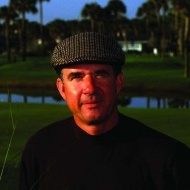Bobby Weed began his career with an apprenticeship under Pete Dye. Weed was hired by the PGA Tour in 1983 and became the in-house architect in 1987. In that post, he was responsible for the design of many of the best known Tournament Players  Club venues, which continue to host prominent PGA Tour events. He collaborated with World Golf Hall of Fame members Sam Snead, Gene Sarazen, Arnold Palmer, Jack Nicklaus, Raymond Floyd, and Chi Chi Rodriguez. In 1994, he founded Bobby Weed Golf Design in Ponte Vedra Beach, Florida. The firm designed Spanish Oaks Golf Club in Austin, Texas; Stoneridge Golf Club in St. Paul, Minnesota; the Olde Farm Golf Club in Bristol, Virginia; Glen Mills Golf Club in Philadelphia; and the Slammer and Squire at the World Golf Village in St. Augustine, Florida.
Club venues, which continue to host prominent PGA Tour events. He collaborated with World Golf Hall of Fame members Sam Snead, Gene Sarazen, Arnold Palmer, Jack Nicklaus, Raymond Floyd, and Chi Chi Rodriguez. In 1994, he founded Bobby Weed Golf Design in Ponte Vedra Beach, Florida. The firm designed Spanish Oaks Golf Club in Austin, Texas; Stoneridge Golf Club in St. Paul, Minnesota; the Olde Farm Golf Club in Bristol, Virginia; Glen Mills Golf Club in Philadelphia; and the Slammer and Squire at the World Golf Village in St. Augustine, Florida.
I was helping Pete Dye build Long Cove Club on Hilton Head Island in 1980 and ’81. We were using a local road contractor to excavate the lagoons and build the roads. They were also doing some heavy earthwork for us on an as-needed basis. Since we were responsible to design and build the project, Pete and I were directing all of the equipment on an hourly basis using the road contractor’s equipment and operators. One morning, Pete and I were sticking pin flags (little wire flags) in the ground to mark out a long, linear bunker along the tenth hole, between the lagoon and fairway. We spent a considerable amount of time laying out the flags in the dirt and had a nice, slow-flowing line paralleling the fairway from tee to green.
We had an older, leather-skinned operator running a Cat D6 straight blade ‘dozer. Pete motioned him over and rattled off specific instructions for him to follow the flags and to cut three feet out between the flags.
“Hog it out and work it over to one side of the flags to give us a four- to five- foot elevation change from one end to the other,” Pete told him.
We then left to attend to other construction activities elsewhere on the golf course.
When we returned a few hours later to check on the progress of the operator, we pulled up and motioned toward the dozer driver. He shut down the dozer, eased out of his seat, stood on the tracks, and hitched up his pants. He spit a little tobacco out the side of his mouth, wiped his hand across his mouth and cheek, and cleared his throat before talking to Pete.
“Look here, Pardner,” he said, “is this here going to be two lanes or four lanes through here?”
Pete dropped to his knees, grabbed a couple handfuls of sand, tossed it aside, and said, “It looks great. Just keep pushing ol’ buddy!”
